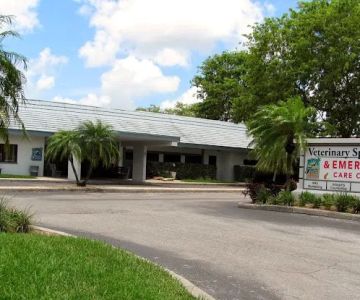Understanding Veterinary Surgery: What You Need to Know
When it comes to the health of our beloved pets, we often turn to veterinarians to provide expert care. However, when things go beyond routine checkups and vaccinations, veterinary surgery may become necessary. Veterinary surgery is a critical field that addresses a wide variety of medical conditions in animals. Whether your pet requires surgery due to an injury, disease, or other complications, understanding what veterinary surgery entails can help alleviate some of the stress that comes with these decisions.
- What is Veterinary Surgery?
- Types of Veterinary Surgery
- How to Prepare for Veterinary Surgery
- Post-Surgery Care for Pets
1. What is Veterinary Surgery?
Veterinary surgery refers to medical procedures performed on animals to treat a variety of health issues. The primary goal of any surgery is to improve the animal’s health, alleviate pain, and enhance their quality of life. These procedures range from routine spaying and neutering to more complex surgeries, such as organ transplants or orthopedic surgeries for fractures.
One of the first times I personally experienced the necessity of veterinary surgery was when my dog, Max, tore his ACL during a hike. His condition required a specialized orthopedic surgery to repair the ligament and ensure he could return to an active lifestyle. The thought of him undergoing surgery was overwhelming, but learning more about the procedure and speaking with the vet helped me make the right choice for his well-being.
Veterinary surgery encompasses a wide array of specialties, including soft tissue surgery, orthopedic surgery, dental surgery, and emergency surgery. The complexity of each procedure depends on the animal’s condition and the skill of the veterinary surgeon. It’s important to note that, like human surgeries, the goal of veterinary surgery is to improve the animal’s health and comfort, while minimizing risks and complications.
2. Types of Veterinary Surgery
Veterinary surgery can be broadly categorized into several types, each serving a different purpose based on the needs of the animal. Below, I’ll go over some of the most common types of veterinary surgery:
2.1 Soft Tissue Surgery
Soft tissue surgeries are the most common type of veterinary surgery and involve the removal or repair of soft tissues such as muscles, organs, or skin. These procedures are often performed to treat conditions like tumors, infections, or injuries. For instance, when my cat, Luna, developed a benign tumor in her abdomen, a soft tissue surgery was performed to safely remove the growth. Soft tissue surgeries typically have a relatively short recovery period and are generally low-risk when performed by an experienced veterinarian.
2.2 Orthopedic Surgery
Orthopedic surgeries focus on the bones and joints of animals. These procedures are usually required in the case of fractures, dislocations, or joint issues like hip dysplasia. I remember when Max’s knee injury required a complex procedure to repair the torn ligament in his knee—an orthopedic surgery. The recovery process was more involved than soft tissue surgeries, as it required him to remain still and wear a special brace to ensure proper healing. Orthopedic surgeries can be highly effective but require a longer recovery period and ongoing rehabilitation.
2.3 Emergency Surgery
Emergency surgeries are performed when an animal is in a life-threatening situation and needs immediate intervention. These types of surgeries can range from treating traumatic injuries, like broken bones or internal bleeding, to addressing acute conditions like bloat or gastric torsion. In my experience, emergency surgery is one of the most critical aspects of veterinary care. I once rushed my dog to the vet after he swallowed a foreign object, and he needed emergency surgery to remove it. Thankfully, the vet was quick and efficient, and Max made a full recovery.
2.4 Dental Surgery
Dental surgery is another important aspect of veterinary care. Animals often need dental surgery for issues such as tooth extractions, gum disease, or fractured teeth. Dental health in pets is often overlooked, but it plays a crucial role in their overall health. My dog, Bella, had a tooth that had become infected, and dental surgery was required to remove it. Since then, I’ve been more diligent in caring for her teeth, ensuring that she undergoes regular checkups to prevent further dental issues.
3. How to Prepare for Veterinary Surgery
Preparing your pet for surgery can be an emotional and stressful experience, but knowing what to expect can help ease your concerns. Based on my personal experience, here are a few important steps to take when preparing for veterinary surgery:
3.1 Consult with the Veterinarian
The first step is to have a thorough consultation with your veterinarian. This is the time to ask any questions you may have about the procedure, the risks involved, and the expected recovery process. The more informed you are, the less stressful the experience will be for both you and your pet. My vet was incredibly patient with me when explaining Max’s surgery, and having that information helped me feel more at ease.
3.2 Pre-Surgery Tests
Before surgery, your veterinarian may recommend pre-surgery tests, such as blood work or imaging, to assess your pet’s overall health. These tests help ensure that your pet is in good condition to undergo the procedure. Max had blood tests prior to his surgery to ensure he was healthy enough for anesthesia. These tests are essential for detecting any underlying health issues that may affect the surgery’s success.
3.3 Prepare Your Home for Recovery
After the surgery, your pet will need a quiet and comfortable space to rest and recover. Make sure you have a clean, cozy area for your pet to relax in, away from other pets or distractions. I made sure to set up a small, quiet area for Max to rest after his surgery, and I kept an eye on him to ensure he wasn’t too active during his recovery period.
4. Post-Surgery Care for Pets
Once the surgery is complete, your pet’s recovery is the next crucial step. The post-surgery care you provide will greatly impact how quickly your pet heals. Here’s what I learned during my experience with Max’s surgery:
4.1 Follow-Up Appointments
After surgery, it’s important to schedule follow-up appointments with the vet to monitor your pet’s progress. These appointments allow the vet to assess how the surgery site is healing and address any concerns. Max had a few follow-up visits to ensure his knee was healing properly and that no complications arose. These checkups are vital in catching any issues early on.
4.2 Medication and Pain Management
After surgery, your pet may be prescribed medication for pain relief and to prevent infection. Be sure to administer the medication as directed, and if you notice any adverse reactions, contact your vet immediately. Max was given pain medication after his surgery to keep him comfortable, and I made sure he took it on schedule to aid in his recovery.
4.3 Rest and Restricted Activity
One of the most challenging aspects of post-surgery care is ensuring your pet gets enough rest and avoids too much physical activity. For Max, this meant limiting his movement to prevent putting stress on his healing knee. It can be tough to keep an active pet still, but it’s important for their healing process. Be patient and ensure your pet follows the vet’s instructions for restricted activity.
Veterinary surgery is an essential part of modern veterinary care, helping pets recover from injuries, diseases, and other health conditions. Whether you’re preparing for a routine surgery or an emergency procedure, understanding the process and knowing what to expect can make a huge difference in your experience. If you’re looking for more information about veterinary surgery or need expert care for your pet, visit our website for top recommendations and services.
OLD Keywords-31: veterinary surgery, types of veterinary surgery, pet surgery, soft tissue surgery, orthopedic surgery, emergency veterinary surgery, pet surgery recovery, veterinary care, post-surgery care for pets, veterinary surgeons SEO Title: What is Veterinary Surgery? Understanding Procedures and Recovery for Pets SEO Keywords: what is veterinary surgery, types of veterinary surgery, soft tissue surgery, orthopedic surgery, pet surgery recovery, emergency veterinary surgery, post-surgery care for pets, veterinary surgery procedures SEO Description: Discover what veterinary surgery is and learn about the different types of procedures and recovery processes. Find out how to prepare your pet for surgery and ensure a smooth recovery. Visit our website for expert recommendations and services.










